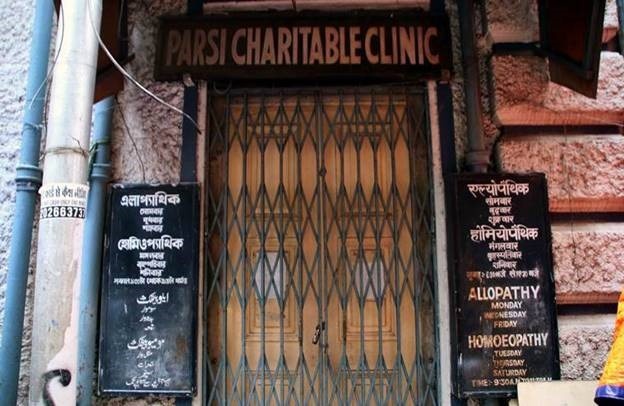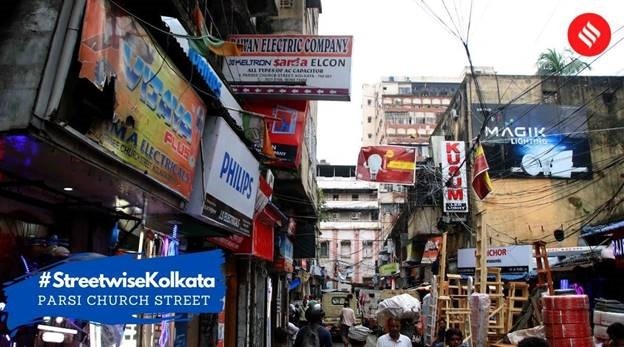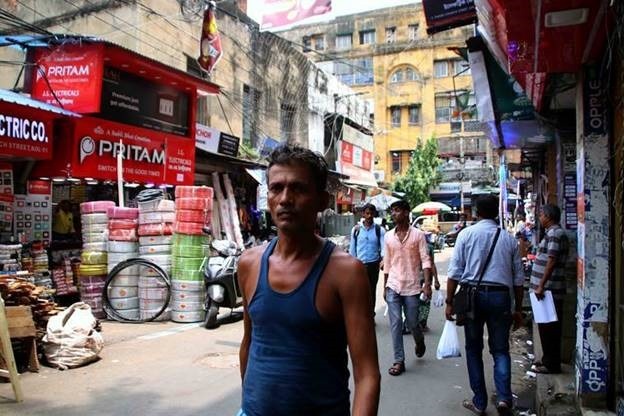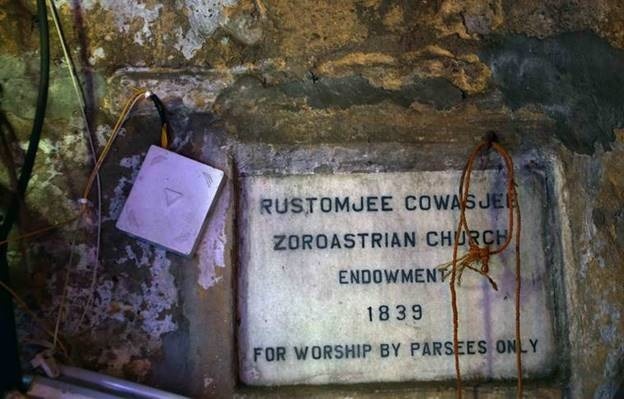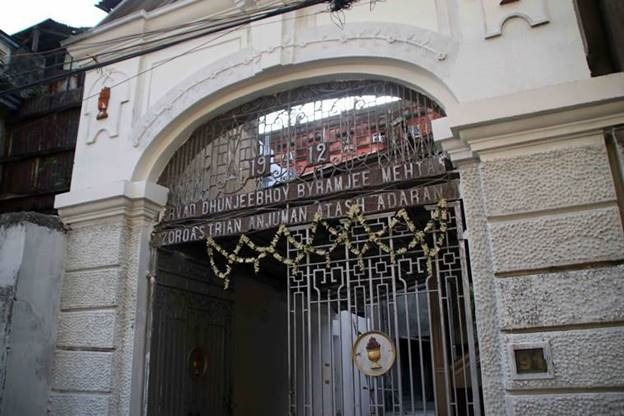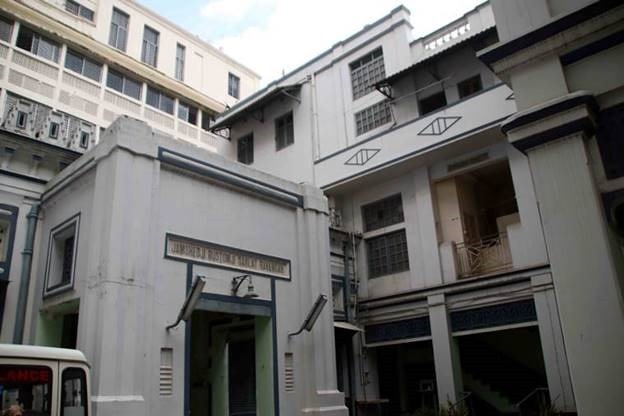A significant part of the lane and the larger neighbourhood’s documented history starts during the 19th century when the Parsi and Jewish communities began settling here.
Written by Neha Banka | Indian Express
A significant part of the lane and the larger neighbourhood’s documented history starts during the 19th century when the Parsi and Jewish communities began settling here in large numbers, establishing homes, businesses and places of worship. (Express Photo by Shashi Ghosh)
It is not clear when the lane was so named, but Parsee Church Street gets its name from the large Parsi fire temple or agiary that stands at 26, Ezra Street. (Express Photo by Shashi Ghosh)
It is easy to miss Parsee Church Street, the narrow bylane just off Ezra Street in central Kolkata. Hawkers and shops jostle to cover every inch of the pavement in these parts of the city seven days a week, late into the evenings. Such a short lane it is, that the lane can be covered on foot in less than five minutes.
The stories of Ezra Street and Parsee Church Street are inextricably tied and in many ways, it is difficult to discern where the story of one ends and the other begins. A significant part of the lane and the larger neighbourhood’s documented history starts during the 19th century when the Parsi and Jewish communities began settling here in large numbers, establishing homes, businesses and places of worship.
The stories of Ezra Street and Parsee Church Street are inextricably tied and in many ways, it is difficult to discern where the story of one ends and the other begins. (Express Photo by Shashi Ghosh)
It is not clear when the lane was so named, but Parsee Church Street gets its name from the large Parsi fire temple or agiary that stands at 26, Ezra Street. In September 1839, Rustomjee Cowasjee Banajee, a shipping magnate, set up this temple, in the presence of several established residents of Calcutta, with Dwarakanath Tagore present to support his friend. The streets and lanes around the agiary started developing into residential areas for the Parsi community in the street.
According to Encyclopedia Iranica, an online portal dedicated to the study of Iranian culture, Parsee Church Street gets its name because of its proximity to this fire temple.
The Parsi agiary, declared a Grade I heritage building in 2001, a stunning example of Gothic architecture with ornate pilaster and marble, now lies decrepit, defunct and aggressively eyed by property developers, particularly since 2018, following the death of the last known trustee, Cursetjee Manackjee Rustomjee.
Nearby, in an old building, a sign hangs for a Parsi Charitable Clinic but its doors were closed when indianexpress.com visited and it is unclear whether the clinic operates today.
The Parsi fire temple, declared a Grade I heritage building in 2001, a stunning example of Gothic architecture with ornate pilaster and marble, now lies decrepit, defunct and aggressively eyed by property developers, particularly since 2018, following the death of the last known trustee, Cursetjee Manackjee Rustomjee. (Express Photo by Shashi Ghosh)
In his book ‘A History of Calcutta’s Streets’, historian P. Thankappan Nair mentions that Parsee Church Street was once called ‘Domtollee ka rustah’ in colonial maps of the city, but it is unclear when the name changed. It is likely that the colonial administration decided to rename the street sometime post 1839 after Banajee’s fire temple was erected in Ezra Street and the Parsi community began settling in the vicinity of the temple.
Nair writes that ‘Domtollee ka rustah’ gets its name from the Dom community, considered untouchables in the caste system. Before the three villages of Sutanuti, Kalikata and Gobindapur were combined to form the city of Calcutta by Job Charnock in 1690, Doomtullah lay on the outermost fringes of Sutanuti.
With the exception of the fire temple and its adjoining buildings, today, there are few visible remnants of the street’s history associated with the Parsi community. (Express Photo by Shashi Ghosh)
The Doms, because of their positioning in the caste system, were forced to live in the outskirts of Sutanuti. When the village created Calcutta, they remained in the areas that had formerly made the fringes of the villages.
But as the city of Calcutta grew and transformed over the years, with the British and foreigners arriving in the city and other communities settling in the city, changing the demographics of various parts of the city, the Doms slowly found themselves displaced from neighbourhoods where they had historically resided.
It is likely that the colonial administration decided to rename the street sometime post 1839 after Banajee’s fire temple was erected on Ezra Street and the Parsi community began settling in the vicinity of the temple. Express Photo Shashi Ghosh
By the 19th century, this neighbourhood became an important part of the Jewish community, largely because of the philanthropy of the Ezra family, and the Parsi community because of wealthy businessmen like Rustomjee Cowasjee Banajee.
With the exception of the fire temple and its adjoining buildings, today, there are few visible remnants of the street’s history associated with the Parsi community.

